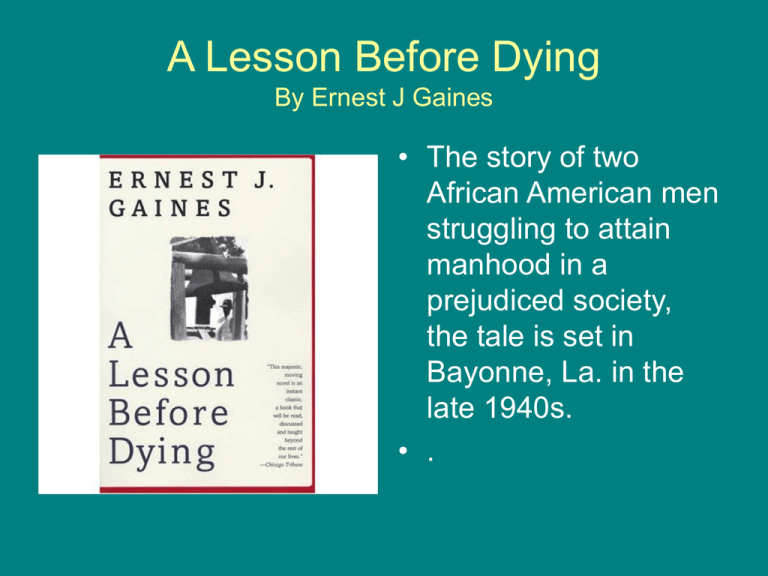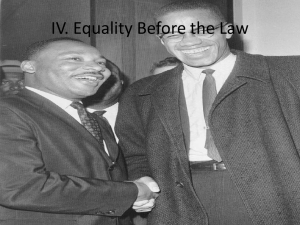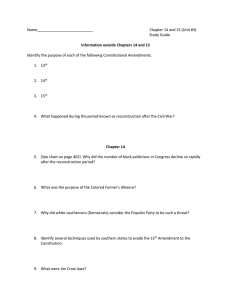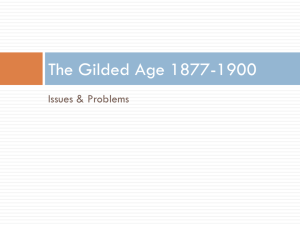A Lesson Before Dying
advertisement

A Lesson Before Dying By Ernest J Gaines • The story of two African American men struggling to attain manhood in a prejudiced society, the tale is set in Bayonne, La. in the late 1940s. • . A Lesson Before Dying By Ernest J Gaines • The story concerns Jefferson, a mentally slow, barely literate young man, who, though an innocent bystander to a shootout between a white store owner and two black robbers, is convicted of murder, and the sophisticated, educated man who comes to his aid. A Lesson Before Dying By Ernest J Gaines • When Jefferson's own attorney claims that executing him would be tantamount to killing a hog, his incensed godmother, Miss Emma, turns to teacher Grant Wiggins, pleading with him to gain access to the jailed youth and help him to face his death by electrocution with dignity. FACTS about this decade. • Population 132,122,000 • Unemployed in 1940 8,120,000 • National Debt $43 Billion • Average Salary $1,299. Teacher's salary $1,441 • Minimum Wage $.43 per hour FACTS about this decade. • 55% of U.S. homes have indoor plumbing • Antarctica is discovered to be a continent • Life expectancy 68.2 female, 60.8 male • Auto deaths 34,500 FACTS about this decade. • US drops atomic bombs on Japan top end WWII. • World War II changed the order of world power, the United States and the USSR became super powers • Cold War begins Presidents • Harry Truman - (May 8th1894 – December 26, 1972) was the thirty-third President of the United States (1945–1953). • He used executive orders to begin desegregation of the U.S. armed forces and to launch a system of loyalty checks to remove thousands of communist sympathizers from government office. Presidents • • Dwight David Eisenhower (October 14 1880 – March 28, 1969), nicknamed "Ike", was a five star general in the United States Army, who served as the thirtyfourth President of the United States (1953–1961). As President, he oversaw the cease-fire of the Korean War, kept up the pressure on the Soviet Union during the Cold War, made nuclear weapons a higher defense priority, launched the Space Race, enlarged the Social Security program, and began the Interstate Highway System. Life in the United States in the 1940s • The 1940's were dominated by World War II. • War production pulled us out of the Great Depression. The in the United States in the 1940s • Women were needed to replace men who had gone off to war. • Women had to give up their jobs to the returning men, but they had tasted independence. The in the United States in the 1940s • After the war, the men returned, having seen the rest of the world. • No longer was the family farm an ideal; • no longer would blacks accept lesser status. • The GI Bill allowed more men than ever before to get a college education. Segregation in the US • The issue of race still tore apart the nation • The South was still living under segregation called Jim Crow Laws, named after an 1830s minstrel show character. Segregation in the US • One after another, Southern states passed laws segregating blacks and restricting African American rights in almost every conceivable way. • For example, Tennessee initiated segregated seating on railroad cars in 1881. Florida (1887), Mississippi (1888), and Texas (1889) followed. Segregation in the US • In Alabama, laws prohibited blacks and whites from playing checkers together; • in Louisiana, statutes ordered that there be separate entrances for blacks and whites at circuses. • All Southern states prohibited interracial marriages. Sharecropping • Sharecropping is a system of agriculture or agricultural production in which a landowner allows a tenant to use the land in return for a share of the crop produced on the land (e.g., 50 percent of the crop). Education • Education was racially segregated. • Poor African American communities could not raise the funds for teacher salaries. • The average expenditure on white students was $80 and on black students was $15 Living Conditions in the South • 77% of blacks still lived in the South • In 1949 the average salary for blacks was $1761.06 and the average salary for whites was $2984.96 Music & Radio • Radio was the life line for many Americans providing the news, music and entertainment, much like TV today. • Music was from the Big Bands, Glen Miller, Duke Ellington and Benny Goodman. • Later in the decade Be Bop and Rhythm and Blues became popular. These were primarily black performers like Charlie Parker, Billy Holiday and Ella Fitzgerald. Death Penalty • From the 1920s to the 1940s there was a resurgence in the death penalty. • Many Americans believed that it was a necessary social deterrent to rising crime rates Your Assignment • Today United States is still one of the only countries that still has the death penalty. • Do you think the death penalty is fair? Do you think it is a deterrent? Do you think it is applied fairly? • Your job is to answer these questions • You need to find evidence to support each of your answers. (Bring Document and search path to class) • You will meet with your team on Monday and review your team member’s positions and evidence. • We will engage in class debate regarding these issues





